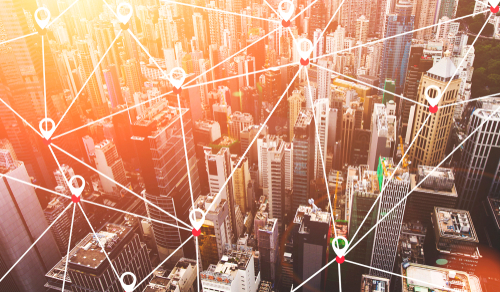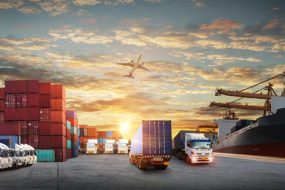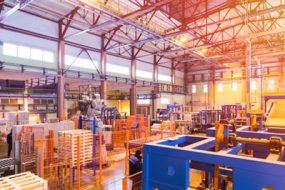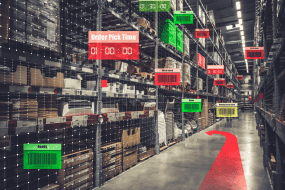

Urbanisation refers to people migrating from rural areas to urban centres, resulting in increasingly crowded cities. This movement strains city infrastructure and presents significant challenges for courier services and global logistics providers, which are essential for delivering goods from one location to another, whether across borders or within the city itself. As more people move to urban areas, there is a growing demand for faster and more efficient delivery services. Over 4 billion people inhabit cities, which is expected to grow by 2050. Cities are innovating faster, and delivery service providers must adapt to increasing customer demands.
The Impact of Urbanisation on Global Logistics
The rapid growth of urban cities brings intricate infrastructure, transportation, and environmental sustainability challenges. As urban environments become increasingly complex, logistics companies find themselves at a crossroads, needing to innovate to maintain a competitive edge. By closely monitoring the effects of urbanisation, these businesses can adapt their operations in meaningful ways. This proactive approach enhances operational efficiency and significantly cuts costs while addressing the dynamic demands of a population continually evolving within these bustling metropolitan areas.
Urbanisation and Infrastructure
Growth of Urban Areas
As more people move to cities, logistics providers must develop innovative strategies to meet the growing service demand. This can be achieved through automation, more innovative urban planning, and eco-friendly solutions. Companies that embrace these trends will be well-positioned to thrive in an urbanised world.
The Effect on Transportation Systems
Urbanisation puts pressure on transportation networks. Logistics services in cities with outdated infrastructure will face delivery delays and difficulties with real-time tracking. Due to congestion, vehicle restrictions, and other logistical challenges, navigating the transport of goods will become more complex and expensive. As a result, companies may struggle to meet customer demands.
Last-Mile Delivery and Urbanisation
Challenges with Last-Mile Delivery in Cities
Getting products to their final destination – last-mile delivery – is most challenging in urban areas. Factors such as heavy traffic, restricted delivery timeframes, and the inability to reach apartment buildings create significant delays. This means increased fuel costs, missed deliveries, and unhappy customers. To tackle these problems, logistics companies can investigate alternatives such as electric vehicles, drones and cargo bikes. These technologies ensure swifter deliveries and make companies greener, reducing their carbon footprint. Furthermore, real-time parcel tracking gives businesses and customers more control over delivery in busy cities.
Related article: Enhancing Customer Shipments Through Continuous Innovation
Increased Emissions in Urburbanisation
Urbanisation and the number of freight vehicles on the road increase, resulting in higher emissions in cities. This challenges logistics companies that are under pressure to reduce their carbon footprint while meeting growing demands. Many logistics companies are adopting more sustainable practices in response to these environmental concerns. Electric vehicles, optimised packaging, and optimised delivery routes are becoming standard. By combining sustainable logistics with smart city initiatives, companies can effectively balance the need for quick deliveries with the demand for environmentally conscious operations.
Related article: Reduce Emissions, Gain Profits: The Logistics Energy Transition
Technological Changes
Role of Technology in Urban Logistics
Technology has significantly changed how goods are transported within cities. Companies now use advanced tracking systems and data analytics tools to optimise routes, predict traffic patterns, and monitor their vehicles. These innovations streamline urban logistics, ensuring faster and more efficient deliveries.
Automation and Smart City Initiatives
Automation and Smart City Initiatives are rapidly changing how logistics meets urbanisation challenges. Smart city initiatives include using sensors to monitor traffic flow and implementing warehouse robots and autonomous delivery vehicles. Similarly, implementing dedicated lanes for delivery vehicles is making logistics easier by improving infrastructure. Businesses that want to stay competitive must keep up with these technological advancements.
Economic Consequences
The Cost Impact of Urbanisation on Supply Chains
Running a logistics business in increasingly crowded cities is expensive. Urbanisation increases costs due to traffic, high demand for faster deliveries, and the need for better last-mile solutions. Moreover, improving infrastructure and investing in new technologies will increase the cost of operating logistics businesses.
New Opportunities for Global Logistics Companies
Despite the challenges of urbanisation, businesses willing to adapt to change will experience growth opportunities. For instance, companies that employ real-time parcel tracking and green delivery practices such as electric vehicles and optimised routes reduce operational costs and improve efficiency. However, companies that fail to adapt to change will experience high costs, slow deliveries, and dissatisfied customer experiences; therefore, businesses that don’t evolve risk falling behind as the market shUrbanisation greener and smarter logistics practices.
Key Takeaway
Urbanisation is reforming the logistics industry, presenting challenges and opportunities for businesses. As cities continue to grow, the logistics industry faces last-mile delivery challenges and infrastructure struggles, but these also give room for innovation. Therefore, companies must embrace innovative technologies and sustainable practices to excel and stay competitive.
Find out more about ouradvanced warehousing solutionsand discover how they can optimise your business.




